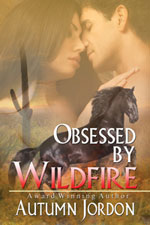A good percentage of romance novels have scenes where the character’s clothes are ripped off in a passionate rush. You’ve read them. You’ve pictured them in your mind. One shoe kicked off here. Another left behind there. Jackets and blouses tossed over the banister. Skirt and jeans left mid-stairway. A bra dangling from the hall sconce. Rumpled boxers and panties at the bedside. You get the picture.
As an author, how many times have you written in a fever toward the ultimate moment only to realize you didn’t dress the characters to begin with? Jill and Jack were walking and talking or even horseback riding through the scene a’ natural.
You might think this blog is only about dressing your characters—it’s not. Read on.
I’m sure everyone reading this blog has read a book that stayed with them for years? One so rich that it was truly unforgettable for them? Great writing has details woven into the story in such a way that they’re not intrusive but still nudge the reader’s memories, bringing the story and characters to life, and engaging the reader.
Visual details are usually the first particulars integrated into our writing. We give our characters faces, hair and eye color, physical descriptions, and clothing. We layer in setting details. When adding visual detail, our hero becomes not just a strapping man, but a strong man who has been injured and walks with a limp. A room is not just four blank walls, but is shown to be a small, oblong room with peeling green paint and cracked ceiling tiles. Visual details should be specific and serve a purpose. A ship is a dinky, luxury liner or aircraft carrier. All are different. All tell something about the story and our characters.
Auditory details are the next most common elements used in writing. Sounds remind us of personal memories, creating images in our minds. Recalling the sound of waves crashing against jagged breakers, reminds me of one of my own favorite vacations. Children giggling brings back the memories of my own children at a younger age plotting against me. A character’s word choice or the cadence of their dialogue is another way to add detail.
Touch leads us to investigate the world around us. Through touch we learn the texture, shape, and size of things. By describing familiar tactile sensations, we encourage our readers to put themselves in the place of the characters, like wiping away of a tear or brushing of lips across a cheek.
The sense of smell is commonly overlooked in writing. It is the one sense most closely linked to memory, because the receptors in the brain responsible for processing smells are close to the area of the brain responsible for the storage of memory. Scents trigger thoughts and emotions.
Taste is also a sense that is forgotten by novice writers. Taste (sweet, sour, bitter or sour) jars a reader’s memory and allows them to recall people, feelings and places associated with the taste. Midnight Martini’s now remind me of my niece’s wedding and how beautiful it was, and how in love the young couple looked, and the way my husband held me close while dancing. Taste is a powerful tool and definitely should not be forgotten.
The more we cause our readers to draw on their memories the more memorable our stories will be.
I’ve heard the five senses should be on every page. Do you think that is possible?
Thursday, March 24, 2011
Not A Stitch
Labels:
2009 Golden Heart Finalist,
Autumn Jordon,
Evil's Witness,
Obsessed By Wildfire,
Using the five senses
 Welcome to my blog. Each week I share my life, my work, and writing tips. At times, I might have wonderful guests stop by. If you like what you read, please comment and/or become a follower.
Want to learn more about my works or me? Hop over to my website. www.autumnjordon.com While you're there, join my newsletter.
Welcome to my blog. Each week I share my life, my work, and writing tips. At times, I might have wonderful guests stop by. If you like what you read, please comment and/or become a follower.
Want to learn more about my works or me? Hop over to my website. www.autumnjordon.com While you're there, join my newsletter.
Subscribe to:
Post Comments (Atom)











Very good post!
ReplyDeleteAs for your question - I think if a writer tries to put all 5 senses on EVERY page it would be a disaster. I like to sprinkle the senses throughout a scene.
I so agree! I am really into the imagery. I wanna be there. I have to smell the flowers, see the sunlight glitter on water. Tell me where I am and what it's like there. Then I can put myself there and forget that I am reading! Great post!!!
ReplyDeleteUse the five senses is an advice given by every editor. When you write a love scene, senses are tremendously important, otherwise the love scene reads like an anatomy textbook. Great topic, Autumn. Glad to have you back.
ReplyDeletewww.monarisk.com
I agree that adding the senses to the page make for a richer reading experience. I've actually taken a class on this. I think adding all 5, all the time, would be overboard. I think 2 is good and according to the class I took, which 2 you choose for each POV can help develop character. Interesting stuff.
ReplyDeleteThanks everyone for stopping by and offering up your opinons.
ReplyDeleteRiley, I never thought of doing that. Great suggestion for characterization. What class did you take?
Great post, AJ!
ReplyDeleteI agree, the five senses are very important.
I've found myself asking "how does it sound, what are they smelling?"
But like Riley mentioned, all five at once could be overwhelming!
Again, great post!
Hey, Lynne. Thanks for stopping by and chiming in.
ReplyDelete